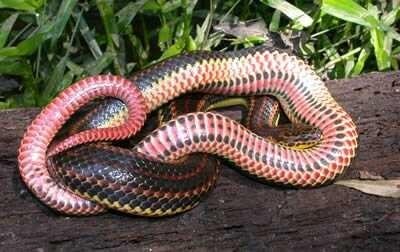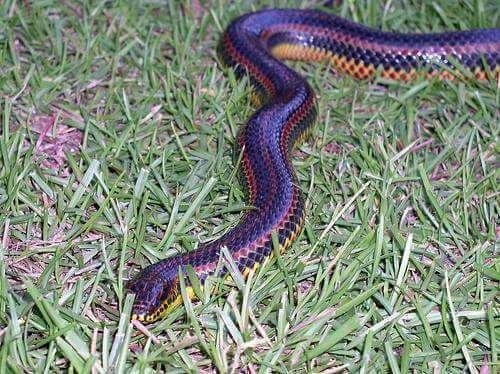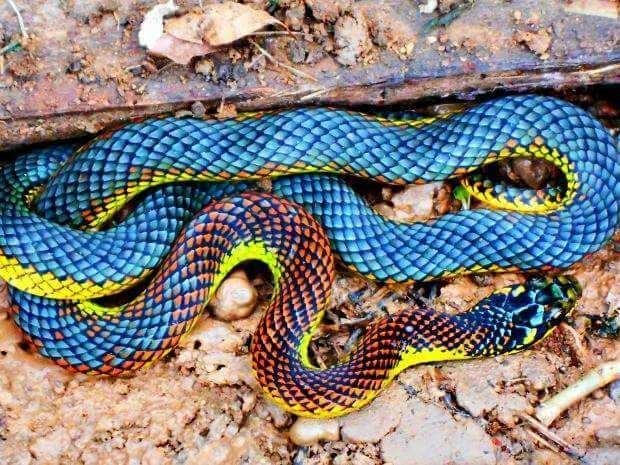Facts About The Rainbow Snake
 Description: The rainbow snake is a large (up to 66 in – 168 cm), non-venomous, highly-aquatic snake that is seldom seen because of its secretive habits. Rainbow snakes are among the most beautiful snakes in the United States . Adults have three red stripes running down a glossy black back. The belly is red or pink with two or three rows of black spots. Yellowish coloration is often present on the head and sides. They have small dark eyes, smooth shiny scales, and a pointed tail tip. Male rainbow snakes are smaller than females but have relatively longer and thicker tails. Young rainbow snakes resemble adults but generally lack any yellow coloration.
Description: The rainbow snake is a large (up to 66 in – 168 cm), non-venomous, highly-aquatic snake that is seldom seen because of its secretive habits. Rainbow snakes are among the most beautiful snakes in the United States . Adults have three red stripes running down a glossy black back. The belly is red or pink with two or three rows of black spots. Yellowish coloration is often present on the head and sides. They have small dark eyes, smooth shiny scales, and a pointed tail tip. Male rainbow snakes are smaller than females but have relatively longer and thicker tails. Young rainbow snakes resemble adults but generally lack any yellow coloration.
Distribution and Habitat: Rainbow snakes are found in the Coastal Plain of the southern United States from southern Virginia to eastern Louisiana and are absent from the Piedmont and Mountains. A small population of rainbow snakes once inhabited the vicinity of Lake Okeechobee in southern Florida . However, no snakes have been found there for several decades, and rainbow snakes are currently presumed to be absent from the southern half of the Florida peninsula.
Rainbow snakes are found in a variety of aquatic habitats but are most common in cypress swamps and flowing-water habitats such as blackwater creeks, streams, and rivers. In coastal areas, rainbow snakes can be found in tidal or even brackish water. In South Carolina young rainbow snakes sometimes inhabit heavily-vegetated seasonal wetlands and move to more permanent water bodies as adults. Although highly aquatic, rainbow snakes occasionally move overland and are sometimes found far from water.
Habits: Rainbow snakes are highly aquatic and spend most of their lives hidden amongst aquatic vegetation and debris. Unlike many of the watersnakes in our region, rainbow snakes seldom bask out of the water and thus are seldom seen, even by dedicated naturalists and herpetologists. Rainbow snakes are perhaps most frequently encountered crossing roads adjacent to aquatic habitats, particularly on rainy summer nights. When captured, rainbow snakes do not bite.
Although large females may lay over 50 eggs, average clutch size is probably closer to 20. Young hatch in late summer but may overwinter in the nest before emerging. Due to their secretive habits, relatively little is known about the ecology of rainbow snakes. Much of what we know about this unusual species is from research conducted at the Savannah River Ecology Lab where large numbers of rainbow snakes have been captured compared to other regions.
Interesting facts: Rainbow snakes are sometimes known as “eel moccasins” because of their tendency to eat eels.
There are other colorful snakes in this world and here are some 


I hope you all enjoy reading this post and please don't forget to upvote, comment, follow and resteem my post because i wouldn't have been here without your love and support. Thank you all